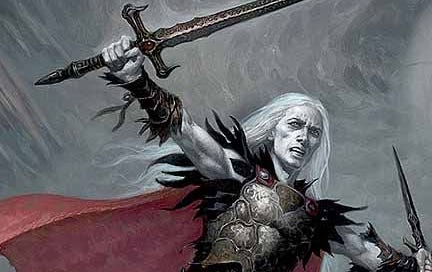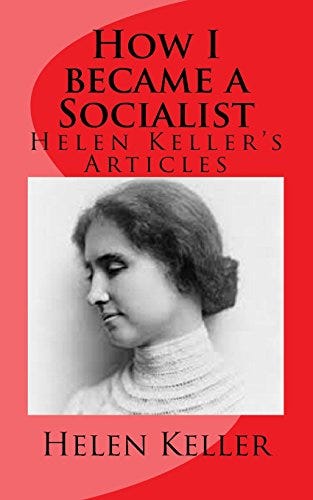In 9th grade, my friends and I loved the Elric series. We read the books. We talked about the Eternal Champion mythology. We even listened to Hawkwind. One day, I read Michael Moorcock's self-parody story “The Stone Thing” and eagerly showed it to my friend who got me into Elric. He was not amused. He took Elric too seriously to for passages like -
Out of the dark places; out of the howling mists, out of the lands without sun; out of Ghonorea came tall Catharz, with the moody sword Oakslayer in his right hand, the cursed spear Bloodlicker in his left hand, the evil bow Deathsinger on his back together with his quiver of fearful rune-fletched arrows, Heartseeker, Goregreedy, Soulsnatcher, Orphanmaker, Eyeblinder, Sorrowsower, Beanslicer, and several others.
The story ends with the hero having a sandstone penis.
John Cheever has a much easier time with self-parody than Moorcock. Moorcock is writing fantasy and fantasy is already ridiculous. It has dragons and magic swords and wizards. If anything, fantasy challenges writers to take these tropes seriously. Moorcock wrote one of the most heartbreaking scenes between Elric and his doomed wife. It loses a great deal of gravitas when Hawkwind has a disembodied voice going “Haha Elric! I turned Zarozinia into a giant slug!”
By contrast, literary fiction is IMPORTANT. It's about real people and real problems. One of the arguments Frederic Wertham made against comic books was that they'd ruin “good novels” about boys and girls sitting together and talking about themselves. Literary fiction gets the NPR segments and the PEN Book attention. Literary fiction wins the Nobel Prize and the Pulitzer. Like boiled vegetables and white bread, it's good for you.
It needs to be parodied.
This story is a five page joke where John Cheever has fun with John Cheever tropes with a happy couple living in Shady Hill. “The Crutchmans were so very, very happy and so temperate in their habits and so pleased with everything that came their way,” that everyone wondered what was wrong with them. What were they doing in Shady Hill? How dare they show up in a John Cheever story?
John Cheever wrote about sad drunks on the brink of bankruptcy who constantly cheated on their spouses. He did not write about happy couples. So he spends the entire story trying to figure out their problems. Larry Crutchman served in WWII but didn't have nightmares. Helen was rich, but Larry was neither jealous nor lazy. He's going to work every day because he enjoys going to work.
Maybe they wanted more than two kids. No, they seem happy. Their son Tom almost died of pneumonia when he was six. Their daughter Rachel was fat and “quite aggressive in a mercenary way.” Evidence of her mercenary aggression? She sold lemonade for 15 cents. What about their money? Maybe they would be spoiled. Nope. Weirdly enough, children from wealthy supportive families have a better chance of growing up to be happy well-adjusted adults. Even Helen Keller pointed out that she learned how to communicate because her family could hire a full-time tutor. Else she would have been locked up in an attic. Ponder that attic, the next time you see The Miracle Worker.
What about premarital sex? That's pretty scandalous in the 1950s. In high school, Tom fell for Carrie Witchell, a “high spirited girl” from a drunk family in Maple Dell. Like Princess Carolyn's mother, her family's main path out of poverty is a forced marriage due to unplanned pregnancy. Only Tom falls out of love and dates many girls before finding his wife in college.
Cheever has better luck with Rachel who does get pregnant and marries the Farquarsons' German gardener's son. Even better, his parents don't approve. So Rachel moves with her husband and “premature” child to Boston, to be supported by her parents until her husband graduates college, obtains a fellowship from MIT and then graduates into a prestigious job.
Sonofabitch.
And then what happened? Did the Crutchmans get lonely and die as empty nesters? No. The Crutchmans happily spent their retirement years in their same clubs. They kept their hair and teeth. Because of Helen's broker “they got richer and richer and richer and lived happily, happily, happily, happily.”
This story is so strange that Cheever didn't even sell it to the New Yorker. Instead, he published it in his Housebreaker of Shady Hill collection. With the last sentence, one suspects that an editor challenged Cheever to write about a happy couple. Neither Cheever nor the narrator knows what to do with these people.
Outside of Morticia and Gomez Addams, writers are not comfortable writing happy families. Writing misery and dysfunction is much more fun. Almost as soon as Peter and MJ finally got married, the writers were plotting to break them up. Joss Whedon famously killed off couples whenever they seemed to be happy. By the time Fred and Wesley got together on Angel, Fred died in the next episode and no one was surprised. Firefly almost broke the Whedon curse with a happy couple, until the movie. Nick and Nora from The Thin Man, seem happy, but they are also functional alcoholics. With this story, Cheever writes a happy couple. He manages to write five pages.
You really should read Elric of Melnibone.
This story was in The Housebreaker of Shady Hill.
If you like these articles and want to support me, please consider getting a paid subscription or hiring me to edit your memoir. If you would like to help out without committing to a subscription, please donate to my Gofundme. Even $5 will help.







Is "The Worm in the Apple" Cheever's analogue to "The Ones Who Walk Away from Omelas"?